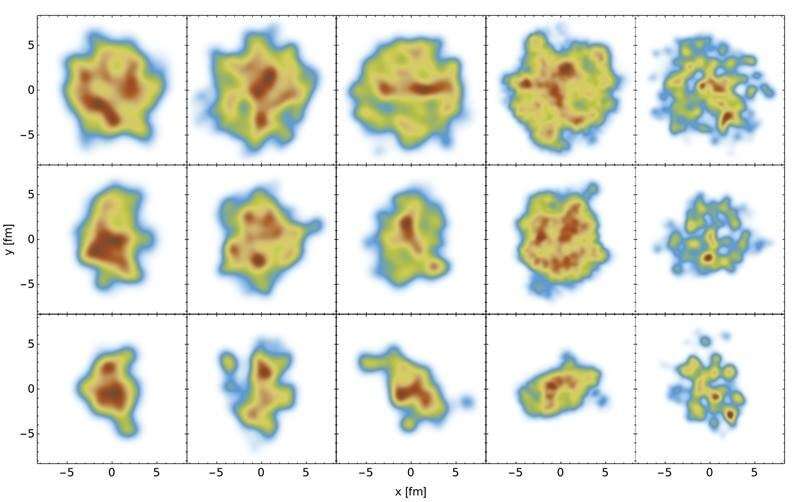This article has been reviewed according to Science X's editorial process and policies. Editors have highlighted the following attributes while ensuring the content's credibility:
fact-checked
peer-reviewed publication
trusted source
proofread
Nucleons in heavy ion collisions are half as big as previously expected

To study atomic nuclei and subatomic particles, scientists use the Large Hadron Collider (LHC) to collide heavy ions—atomic nuclei completely stripped of their surrounding electrons. In these collisions, the quarks and gluons that normally make up nucleons (protons and neutrons) melt into a new state of matter called a quark-gluon plasma (QGP).
To figure out the properties of this QGP, theorists compare a sophisticated model to a large amount of experimental data. One of the parameters in this model is the size of the nucleons inside the two colliding lead nuclei. However, to reach agreement with the reaction rate, nucleons must be smaller than scientists had expected based on previous analyses.
Low-energy experiments find a nucleon size of around 0.5 femtometer (fm), or about 5x10-16 meters. Heavy ion collisions provide a fundamentally different perspective on the nucleon size compared to these low-energy experiments. Previous analyses of heavy ion experimental data have found a much larger nucleon size, of about 1 fm.
The new analysis includes for the first time the experimentally measured reaction rate of lead-lead collisions. The reaction rate is the frequency with which atomic nuclei react with each other, and it is determined by the density of nuclei in the beam as well as the size of the nuclei. After including this reaction rate, the preferred size is around 0.6 fm, resolving the discrepancy.
The total hadronic cross section of lead-lead collisions tells scientists the collision rate for given beam density. The cross section is very easy to compute in a theoretical model, making it a good candidate for comparison to experiments in a global analysis. However, the experimental measurement is more difficult to perform. As a result, until the year 2021 scientific uncertainties on this quantity were large.
In 2022, a new measurement from A Large Ion Collision Experiment (ALICE) at the LHC reduced these uncertainties substantially, allowing for its inclusion in a global analysis. This analysis, performed by researchers at the Massachusetts Institute of Technology and CERN, compares a theoretical calculation to more than 600 individual experimental data points.
The analysis found that when not including the cross-section measurement, nucleon sizes of around 1 fm are preferred. However, when the cross section is included, this preferred value decreases to around 0.6 fm.
The findings are published in the journal Physical Review Letters.
More information: Govert Nijs et al, Hadronic Nucleus-Nucleus Cross Section and the Nucleon Size, Physical Review Letters (2022). DOI: 10.1103/PhysRevLett.129.232301
Journal information: Physical Review Letters
Provided by US Department of Energy





















